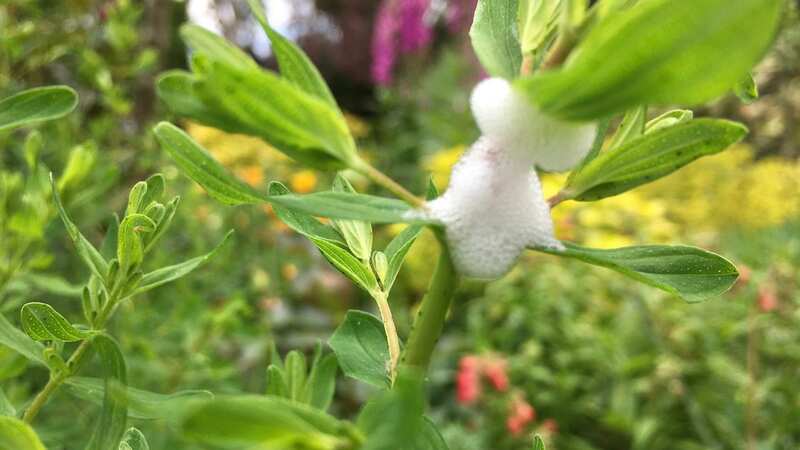Do not touch warning as odd 'spittle' appears on plants in UK gardens this month

Green fingered Brits have been warned of a "spittle" which will soon be appearing on garden plants.
Strange things start happening in our gardens and in the green spaces around our neighbourhoods this time of year.
While many may be hoping to find our green spaces teeming with life it is also at this time of year people may notice an odd 'spittle' on garden plants which, though not harmful, householders and gardeners are urged not to touch.
It resembles a ball of froth, or foam and is made by an insect called a spittlebug which coats itself in a ball of foam for protection as it sucks on the sap from a plant for nutrition.
The red and black creature's offspring, also known as froghoppers, then hatch on a plant which has the leftover ball of foam, Yorkshire Live reported.
 Insect blamed for mystery rise in life-changing illness that alters eye colour
Insect blamed for mystery rise in life-changing illness that alters eye colour
The insect is usually active from the end of May to the end of June, so it is peak season for sightings right now.
Though the insects feed on the plants, they don't remove enough nutrition to harm it and they don't hurt humans, so you don't need to do anything to get rid of the spittle.
Given that insect numbers have reduced by as much as 60% in the past 10 years alone according to studies in the UK, it's actually an extremely good sign to see insects breeding in gardens.
As per the food chain, if insects die out, there'll be nothing to pollinate flowers (it's not just bees!), and nothing to feed animals higher up the chain that keep the entire ecosystem's cycle running smoothly. The end result is, without insects, we won't be able to grow any food at all.
So for that reason, it's really important to allow the insects to breed, and not to wash off or interrupt their delicate life cycle.
Scientists are also worried a plant disease known as Xyella could be spread between plants by the spittlebug as a carrier.
If it was found in the UK, all plants within a 100m radius would need to be destroyed, with a 5km plant quarantine for up to five years afterwards because the disease could wipe out native UK plant species.
And because the spittlebug is a potential carrier of the disease, scientists are asking people to report any sightings of the spittlebug spittle, just in case, so that any outbreaks that do occur could be linked and tracked to what causes them.
A spokesperson for the Spittlebug survey said: "Please let us know when you see either spittle, nymphs (juveniles) or adults of the xylem-feeding insects (spittlebugs / froghoppers and some leafhoppers ) that have the potential to act as vectors of the bacteria.
"These records will help us build up a picture of where the bugs are found, what plants they feed on and how much they move around.
 Couple survive swarm of 10,000 bees - but left with stings all over their bodies
Couple survive swarm of 10,000 bees - but left with stings all over their bodies
“This information will be essential for deciding how best to respond should the Xylella bacterium arrive in the UK."
Read more similar news:
Comments:
comments powered by Disqus

































